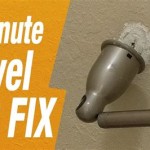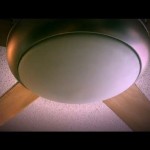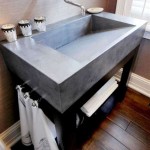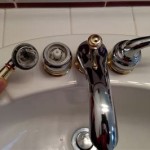How To Install A Bathroom Fan Duct
Proper ventilation is crucial for any bathroom to prevent moisture buildup, which can lead to mold, mildew, and structural damage. A bathroom exhaust fan effectively removes excess moisture and odors, but its efficacy depends heavily on proper ductwork installation. This article details the process of installing a bathroom fan duct, ensuring optimal performance and longevity.
Planning and Preparation: Before beginning the installation, careful planning is essential. Determine the shortest and most direct route from the fan housing to the exterior vent. Longer duct runs and multiple elbows reduce airflow and increase the risk of condensation buildup within the duct. Ideally, the duct should vent directly through the roof or an exterior wall. Venting into an attic or soffit space is discouraged as it can trap moisture and cause problems.
Material Selection: Selecting the correct duct material is critical for efficient ventilation. Rigid metal ducting, such as galvanized steel or aluminum, is recommended for its durability, smooth interior surface, and resistance to moisture. Flexible ducting, while easier to install, is less efficient due to its corrugated interior, which restricts airflow. If flexible ducting must be used, choose a short, smooth-walled type specifically designed for bathroom ventilation.
Sizing the Ductwork: The duct size must match the fan's cubic feet per minute (CFM) rating. Refer to the manufacturer's instructions for the recommended duct size. Using a duct that is too small will restrict airflow and reduce the fan's effectiveness. Using a duct that is too large can lead to reduced air velocity and potential condensation issues.
Connecting the Duct to the Fan Housing: Start by securing the duct connector to the fan housing outlet. Typically, this involves using foil tape to create an airtight seal. Avoid using duct tape for this purpose as it can degrade over time and lose its adhesion. Ensure the connection is secure and free of any gaps or leaks.
Running the Ductwork: Carefully run the ductwork along the planned route, supporting it with straps or hangers every 4-6 feet. Keep the ductwork as straight as possible, minimizing the number of bends and elbows. When bends are necessary, use gradual, sweeping elbows rather than sharp 90-degree turns. This minimizes airflow resistance.
Installing the Exterior Vent: The exterior vent terminates the duct run and protects it from the elements. Choose a vent designed for bathroom exhaust and ensure it is properly sized for the ductwork. If venting through the roof, use a roof jack specifically designed for this purpose. Seal all connections between the duct, vent, and roof jack with sealant or flashing tape to prevent leaks.
Sealing the Ductwork: Once the ductwork is in place, seal all joints and connections with foil tape. This creates an airtight system, maximizing airflow and preventing moisture from escaping into the surrounding structure. Pay close attention to the connections between duct sections, elbows, and the fan housing.
Insulating the Ductwork (Recommended): In colder climates, insulating the ductwork can prevent condensation and improve energy efficiency. Wrap the duct with insulation specifically designed for ductwork. Secure the insulation with tape or ties. This is particularly important for ducts running through unheated spaces like attics or crawl spaces.
Testing the Installation: After completing the installation, test the fan to ensure it operates correctly and that the exhaust air is vented properly to the exterior. Turn the fan on and check for any unusual noises or vibrations. Hold a tissue near the exterior vent opening to confirm that air is flowing outwards. If any leaks are detected, address them immediately by sealing the affected areas with foil tape.
Building Codes and Regulations: It is essential to comply with all local building codes and regulations regarding bathroom ventilation. These codes often specify requirements for duct materials, sizing, and installation methods. Consult with local building authorities to ensure your installation meets all applicable codes.
Safety Precautions: When working with electrical wiring, always turn off the power to the circuit at the breaker box before starting any work. If working in an attic or other confined space, ensure adequate ventilation and wear appropriate safety gear, including a dust mask and eye protection.
Professional Assistance: While installing a bathroom fan duct can be a DIY project for experienced homeowners, complex installations or situations involving extensive ductwork may require the expertise of a qualified HVAC professional. A professional can ensure the installation is done correctly, complies with building codes, and provides optimal ventilation for your bathroom.

Installing A Bathroom Fan Fine Homebuilding

Venting A Bath Fan In Cold Climate Fine Homebuilding

Install A New Bathroom Vent Fan Light

Blog

Installing The Vent For A Bathroom Exhaust Fan

How To Install A Bathroom Fan Diy Family Handyman

Inspecting For Air Sealing At Kitchen And Bathroom Exhaust Fans Internachi

Domestic Fan Installation Compliance Checker Vent Axia

How To Use An In Line Exhaust Fan Vent Two Bathrooms Diy Family Handyman

How To Install A Bathroom Exhaust Fan
Related Posts







